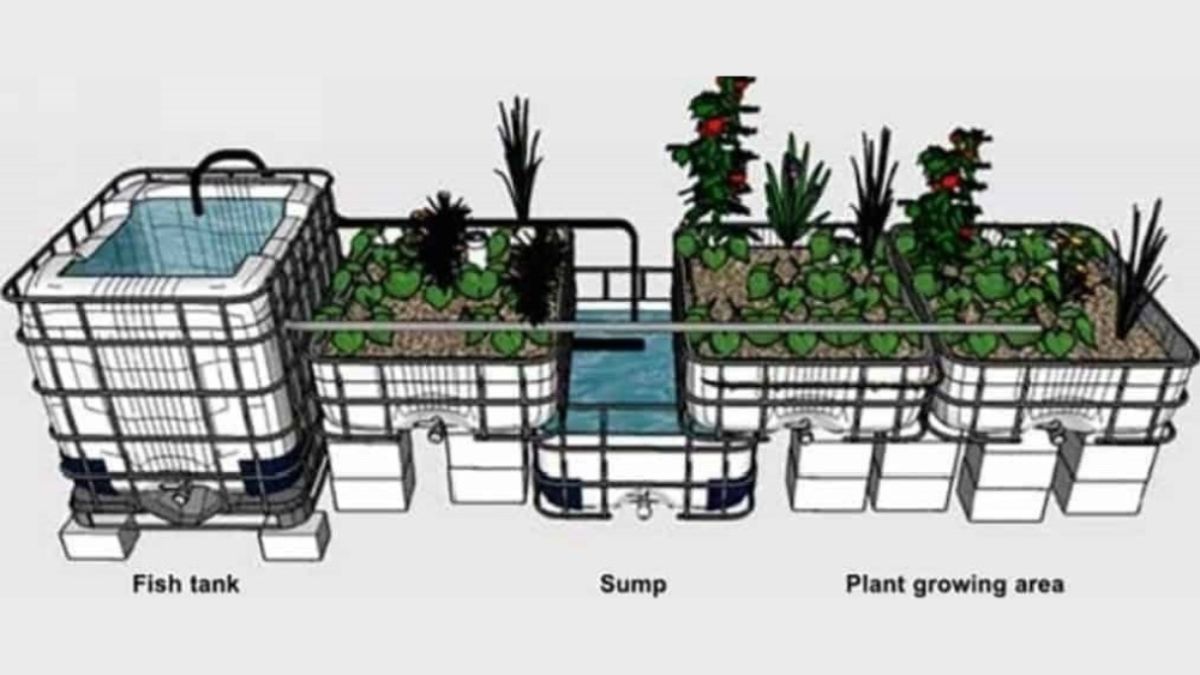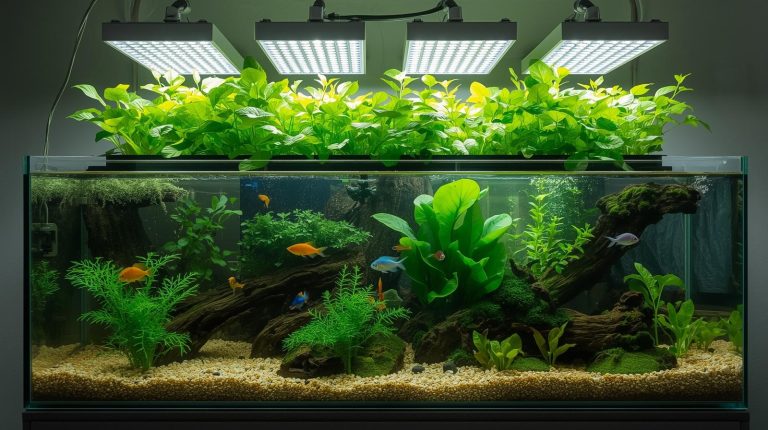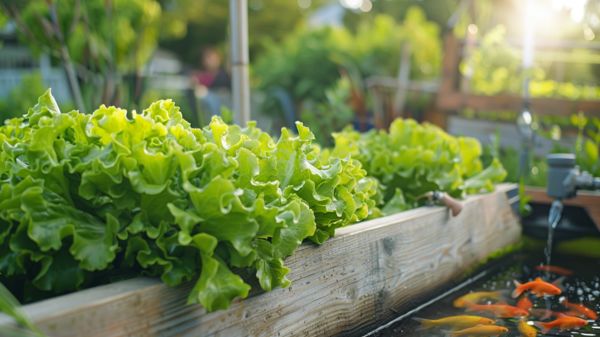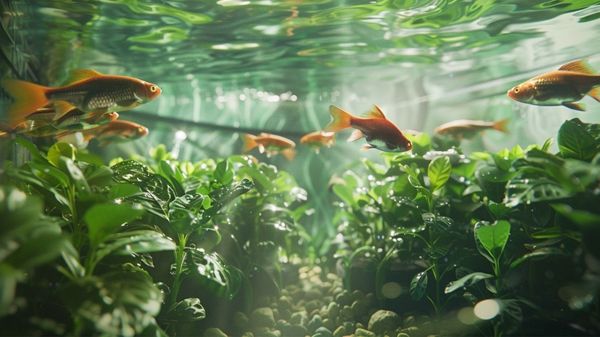Are you searching for the ultimate aquaponics fish tank design that will revolutionize your setup? You’ve come to the right place!
Finding the perfect design involves a delicate balance of factors crucial for the well-being of your aquatic buddies and plant companions. From selecting the right tank size and shape to considering material durability and optimal placement, each decision impacts the success of your aquaponics system.
Stay tuned to uncover the key elements that will guide you towards creating a harmonious and thriving aquatic environment.
Key Takeaways
- Choose tank size based on desired outcomes and space availability.
- Opt for durable materials like fiberglass and PVC for longevity.
- Ensure optimal tank height for fish comfort and system efficiency.
- Transparent tanks aid in monitoring ecosystem health and nutrient cycling.
Factors to Consider in Fish Tank Size
When determining the optimal fish tank size for your aquaponics system, consider how it influences nutrient availability for plants and fish stocking capacity.
The fish tank size plays a crucial role in maintaining water quality, as larger tanks allow for higher fish stocking densities, leading to a more stable ecosystem. With increased stocking capacity, the system can better handle waste production and maintain appropriate nutrient levels for plant growth.
However, smaller tanks promote faster plant growth rates due to higher nutrient concentrations but may limit the overall harvest yield. Finding the right balance is key to ensuring system productivity and preventing nutrient imbalances.
Optimal fish tank size is the cornerstone of a successful aquaponics system, striking a balance between nutrient availability, fish stocking capacity, water quality, and plant growth rates.
Related Post: Beginner’s Guide to Aquaponics With a Fish Tank.
Choosing the Right Tank Shape
To achieve optimal efficiency and performance in your aquaponics system, carefully consider the selection of the tank shape based on specific requirements and desired outcomes.
Rectangular tanks maximize space efficiency and water circulation, circular tanks enhance water flow and oxygen distribution, while hexagonal tanks offer a compromise between the two. Choose a tank shape that suits your available space, aesthetic preferences, and system requirements for the best design.
| Tank Shapes | Benefits | Considerations |
|---|---|---|
| Rectangular | Maximize space efficiency and water circulation | Ideal for maximizing space in the system |
| Circular | Promote better water flow and oxygen distribution | Enhances water flow and oxygen for plants and fish |
| Hexagonal | Compromise between space efficiency and water circulation | A balance between space and water movement |
Material Selection for Durability
Consider the durability of your aquaponics fish tank by selecting materials such as food-grade polyethylene, fiberglass, glass, acrylic, or safe PVC to ensure long-lasting performance and a healthy environment for your aquatic organisms.
When choosing materials for your aquaponics fish tank, keep in mind the following:
- Fiberglass Tanks: Known for their durability and resistance to corrosion, fiberglass tanks are a popular choice in commercial aquaponics systems due to their longevity and reliability.
- Safe PVC Pipes: Utilizing safe PVC pipes can contribute to water quality issues prevention, ensuring optimal growth and sustainability of your aquatic life.
- Waterproof Sealants: Opt for waterproof materials and sealants to prevent leaks, maintaining the integrity of your tank for optimal performance and longevity.
Maintaining Tank Cleanliness
Maintain optimal cleanliness in your aquaponics fish tank system by implementing regular cleaning practices to prevent algae growth and ensure water quality. Use algae scrapers, siphons, and gentle scrubbers to effectively clean tank surfaces. Vacuum the substrate and remove debris to prevent ammonia buildup, creating a healthy environment for your fish.
Consider introducing beneficial algae-eating fish or snails to naturally control algae growth. It’s crucial to clean filters, pumps, and accessories regularly to maintain optimal functionality and water circulation in your aquaponics tank.
By prioritizing cleaning and maintenance, you aren’t only promoting algae-free conditions but also safeguarding the overall water quality, which directly impacts the health and well-being of your aquatic ecosystem.
Optimal Height for Aquaponics Tanks
When determining the optimal height for aquaponics tanks, it is crucial to consider both the specific needs of your fish species and the system requirements for efficient operation.
- Fish Species Needs: Different species require varying tank heights for comfort and health.
- System Requirements: Consider the impact of tank height on water circulation and oxygen levels.
- Fish Comfort: Ensure the tank height provides ample space for fish to swim and move freely while maintaining a healthy environment.
Structural Stability Considerations
Taking into account the structural stability considerations for your aquaponics system, the placement of the tank on a stable, level surface is paramount to prevent any shifting or tilting that could compromise the integrity of the setup.
To enhance stability, utilize concrete or cement blocks for additional support and secure both grow beds and fish tanks firmly to maintain overall system stability. Be mindful of the weight distribution of water, fish, and system components to prevent structural stress or collapse.
Ensuring system stability is crucial to avoid leaks, maintain proper water flow, and support the weight of all aquaponics components effectively. Prioritizing these structural stability factors will contribute significantly to the longevity and efficiency of your aquaponics fish tank design.
Location Impact on Fish Tank Design
Positioning the fish tank in locations with adequate sunlight exposure plays a critical role in optimizing plant growth and overall system efficiency in aquaponics setups.
Key Factors to Consider:
- Sunlight Exposure: Ensure the tank receives at least 6 hours of sunlight daily for optimal plant growth.
- Strategic Positioning: Place the tank against a south-facing wall or in outdoor spaces like patios to maximize sunlight exposure.
- System Stability: Protect the system from harsh weather conditions like wind, rain, and snow to maintain stability and health.
Budgeting for Tank Purchase
Considering the impact of sunlight exposure on plant growth in an aquaponics system, your next crucial step is to strategically budget for the purchase of the fish tank. To assist you in making an informed decision, here is a comparison table of tank options based on tank size, material, features, budget range, and long-term durability:
| Tank Option | Material | Features | Budget Range | Long-Term Durability |
|---|---|---|---|---|
| Glass Tank | Glass | Transparent | High | Moderate |
| Plastic Tank | Plastic | Lightweight | Low | Low |
| Rubbermaid Tank | Plastic | Sturdy | Medium | High |
| IBC Tote | Plastic | Large Capacity | Medium-High | High |
| Custom Tank | Varies | Tailored Options | Varies | Varies |
Ground Integrity for Tank Installation
To ensure the structural integrity and stability of your aquaponics fish tank system, verify the ground’s capacity to support the weight of the tank, water, and fish. Here are three essential considerations for ensuring the ground integrity for tank installation:
- Weight Support: Choose a location where the ground can withstand the total weight of the tank when filled with water and stocked with fish.
- Level Surface: Install the tank on a flat and level surface to prevent tilting or uneven weight distribution that could compromise the stability of the system.
- Stable Materials: Utilize materials like concrete or cement blocks to provide a stable foundation and prevent sinking or collapsing of the tank, ensuring long-term structural integrity.
Transparency and Monitoring Benefits
For optimal insight into the health and behavior of your aquatic ecosystem, transparent fish tanks offer unparalleled monitoring benefits. The transparency of these tanks allows for easy observation of nutrient cycling and plant growth, aiding in the maintenance of a balanced ecosystem.
Monitoring water clarity and algae growth becomes simplified with a clear tank design, enabling you to detect any imbalances promptly. By having visibility into the tank, you can observe fish feeding habits and waste production more effectively.
This monitoring capability not only helps in keeping the system in check but also ensures early detection of any issues that may arise, ultimately promoting a healthy and thriving aquaponics environment.
Related Post: DIY Aquaponics Fish Tank: 5 Steps to Create Your Own System.
Frequently Asked Questions
What Is the Best Tank Design for Aquaponics?
When designing an aquaponics system, consider factors like stability, sunlight exposure, space, and access. Ensure a stable surface, sunlight for plants, weather protection, space planning, and easy access to electricity and water. Choose a tank design that promotes maintenance, cleaning, and system stability.
What Is the Best Design for Aquaponics?
Consider stability, sunlight exposure, weather protection, space, and access when designing an aquaponics system. Optimal locations maximize sunlight, space efficiency, and accessibility. Maintain pH balance, follow fish to plant ratio guidelines, and use cost-effective PVC pipes for efficiency and durability.
What Is the Best Structure for Aquaponics?
When designing your aquaponics system, prioritize stability, sunlight exposure, weather protection, space availability, and access convenience. Optimal placement includes a south-facing wall for sunlight, corners for space efficiency, windows for indoors, and yards for outdoors. Maintain pH, fish-plant ratio, and use PVC pipes for cost-effectiveness.
What Is the Key to a Successful Aquaponics System?
To achieve a successful aquaponics system, you must prioritize maintaining nutrient balance, monitoring pH levels, and following fish to plant ratio guidelines. By ensuring these elements, you’ll be planting the seeds for a thriving and sustainable ecosystem.
Conclusion
To wrap up, achieving the perfect aquaponics fish tank design is a delicate balance of various factors. By carefully considering size, shape, material, cleanliness, height, location, budget, ground integrity, and transparency, you can create a system that meets your needs and thrives.
Remember, the key to success lies in attention to detail and a thoughtful approach to design. Keep exploring and innovating to create the ideal aquaponics fish tank system for your needs.




